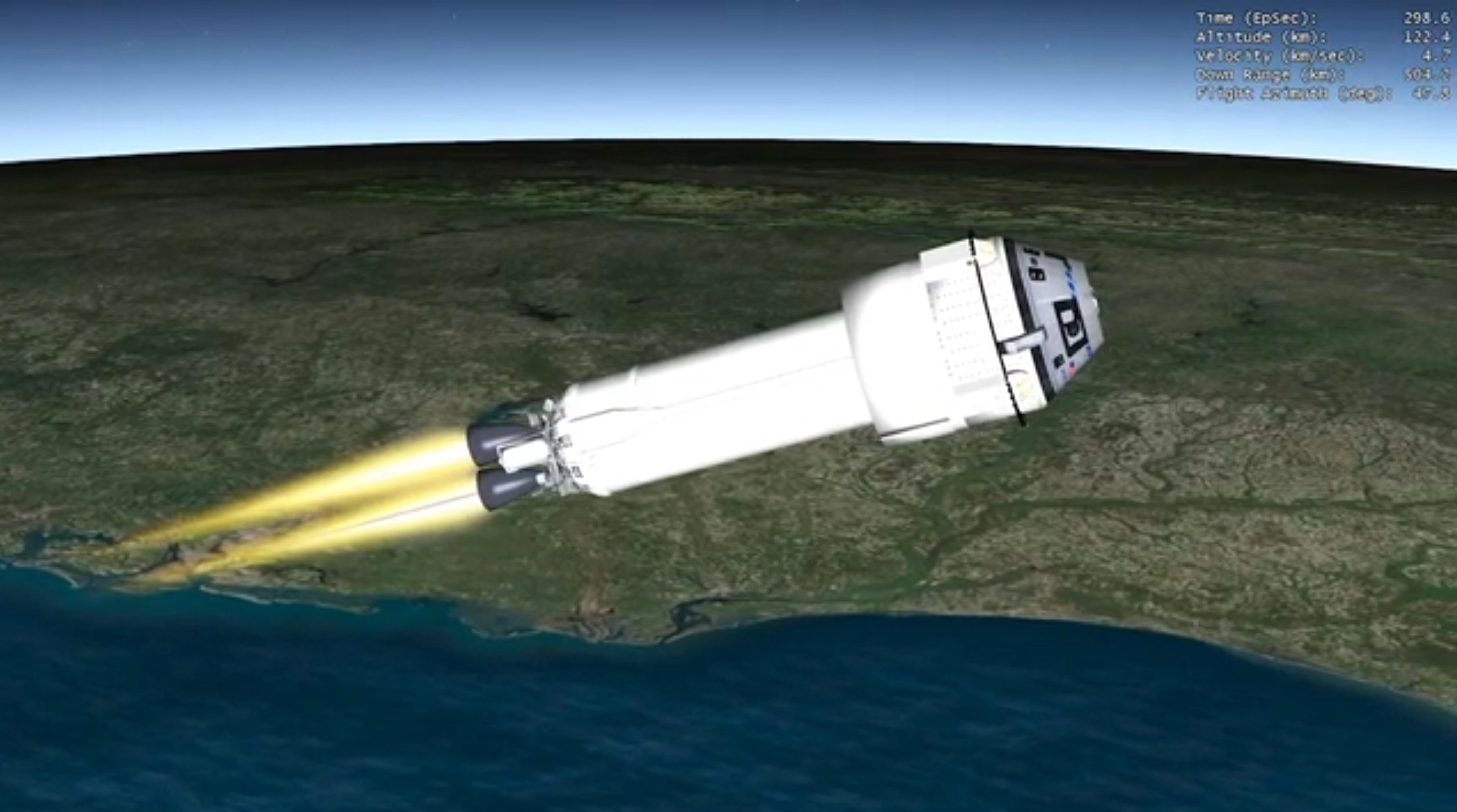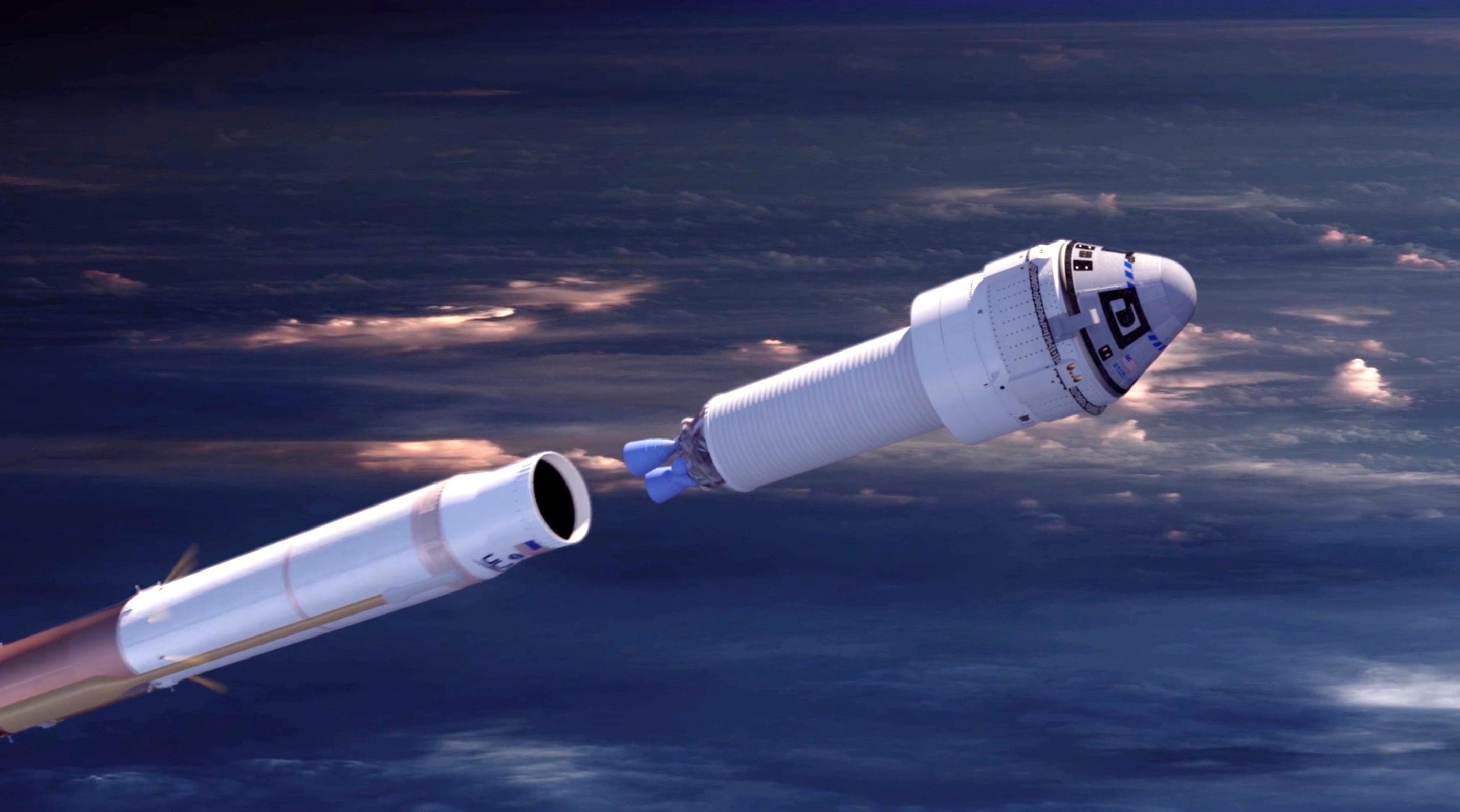The Atlas V rocket will fly a special trajectory to space when launching Boeing's CST-100 Starliner capsules, a flight path that requires the Centaur upper stage to use two engines instead of one.
The Dual Engine Centaur (DEC) was standard aboard Atlas rockets for decades, but the performance generated by Atlas V rendered two engines on the upper stage unnecessary for the past 15 years.
For Starliner missions, however, the double-engine configuration returns so that the rocket can fly a flatter trajectory and ensure the capsule can execute an abort at any time to bring the astronauts back to Earth safely if a problem occurs.
Centaur is the most efficient upper stage flying today. It is constructed using pressure-stabilized stainless steel tanks to hold cryogenic liquid hydrogen fuel and liquid oxygen. The tank walls are 0.02 inches thick, thinner than a dime, which is one of the key features that makes it the highest-performing upper stage in the world.
The venerable stage was developed at the dawn of the space age to harness the power of liquid hydrogen and create a pathway for larger spacecraft to visit the Moon and every planet across the solar system.
First launched in 1962, it has flown 251 times and enabled scientific exploration from the Sun to Pluto and everywhere in between. U.S. national security and telecommunications around the world also have benefited from Centaur.
To date, there have been 166 Dual Engine Centaurs used by both Atlas and Titan rockets and 85 Single Engine Centaurs, exclusively on Atlas.
All Centaurs prior to 2000 were dual-engine configurations, and the most recent was in 2004 on the final launch of the Atlas IIAS vehicle. Atlas rockets have used DECs 143 times from 1962 to 2004 and Titan flew 23 DECs from 1974 to 2003.
Single Engine Centaur was introduced in 2000 on the Atlas IIIA rocket and that carried over to Atlas V for all 80 of its launches thus far.
OFT marks the return to Dual Engine Centaur, providing double the thrust from twin Aerojet Rocketdyne RL10A-4-2 engines. That 44,600 pounds of thrust allows Centaur to execute a customized flight profile for Starliner that features just a single burn and a limited acceleration rate to manage the G-force experienced by the astronauts aboard.
The heritage has carried forward through current designs which allowed for minimal new hardware required to build the Dual Engine Centaur configuration for Starliner missions.
Following the first stage of flight, the Atlas V common core booster will jettison from the Centaur four minutes and 35 seconds after liftoff. The Centaur ignites both engines 10 seconds later at an altitude of approximately 60 nautical miles.
The Centaur burn will last just over seven minutes to deliver Starliner at the desired injection point for separation at T+plus 15 minutes into a 98 by 39-nautical mile suborbital trajectory, inclined 51.6 degrees relative to the equator.
Employing the same operational procedure as the space shuttle that also launched on suborbital trajectories, the Starliner capsule will perform an orbital-maneuvering engine firing about 15 minutes after separation from Centaur to reach a stable orbit. The capsule then begins the chase to catch the International Space Station for docking.
Meanwhile, the Centaur will passivate onboard tanks and re-enter over the Indian Ocean to complete its mission southwest of Australia an hour after liftoff.

 Back To Blog List
Back To Blog List



